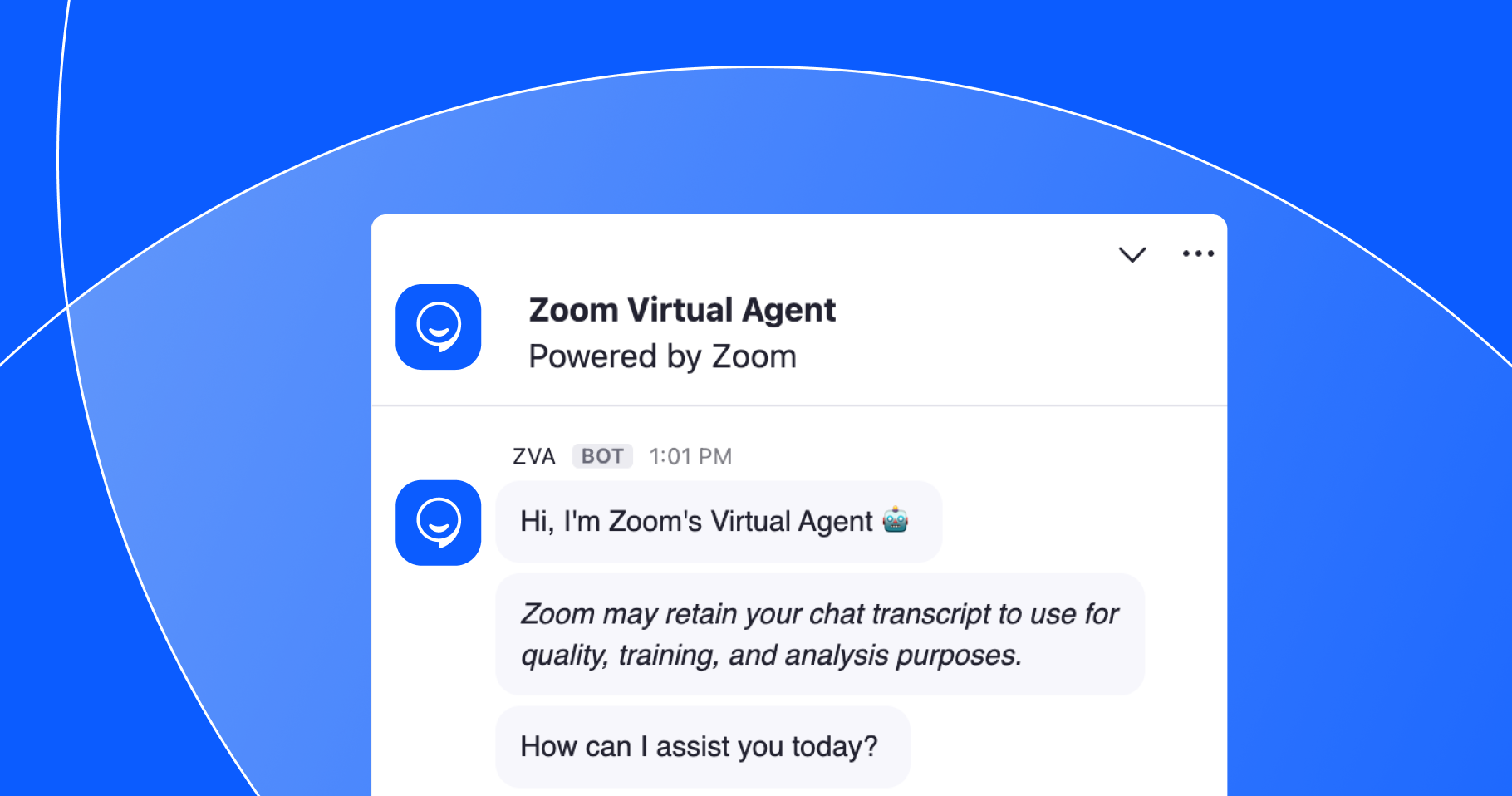
Zoom on Zoom: How we’re reinventing customer experience from the inside out
We use our own Zoom AI chatbot and experience a 97% self-service rate and approximately $20 million in cost savings each month. Find out how.
Updated on June 04, 2024
Published on May 25, 2018


There’s little debate that great customer service can contribute to a successful business. From glowing online reviews that can help build your business to customer loyalty that keeps revenues coming in, great customer service plays an important role in your business strategy.
But are you sure your entire team understands what providing great customer service means? In this article, we’ll provide a refresher guide with 11 impactful customer service examples to help you do just that.
Great customer service is the ability to understand and meet customers’ needs, exceed their expectations, and build long-lasting relationships with them. It’s about creating a positive experience that makes customers feel valued, respected, and satisfied with their interactions with your company.
By prioritizing customer service, you can differentiate yourself in a crowded marketplace, build strong customer relationships, and ultimately strengthen your brand reputation and support your bottom line.
These 11 real-life examples and actionable ideas for providing excellent customer service can inspire you to enhance your customer service strategy.
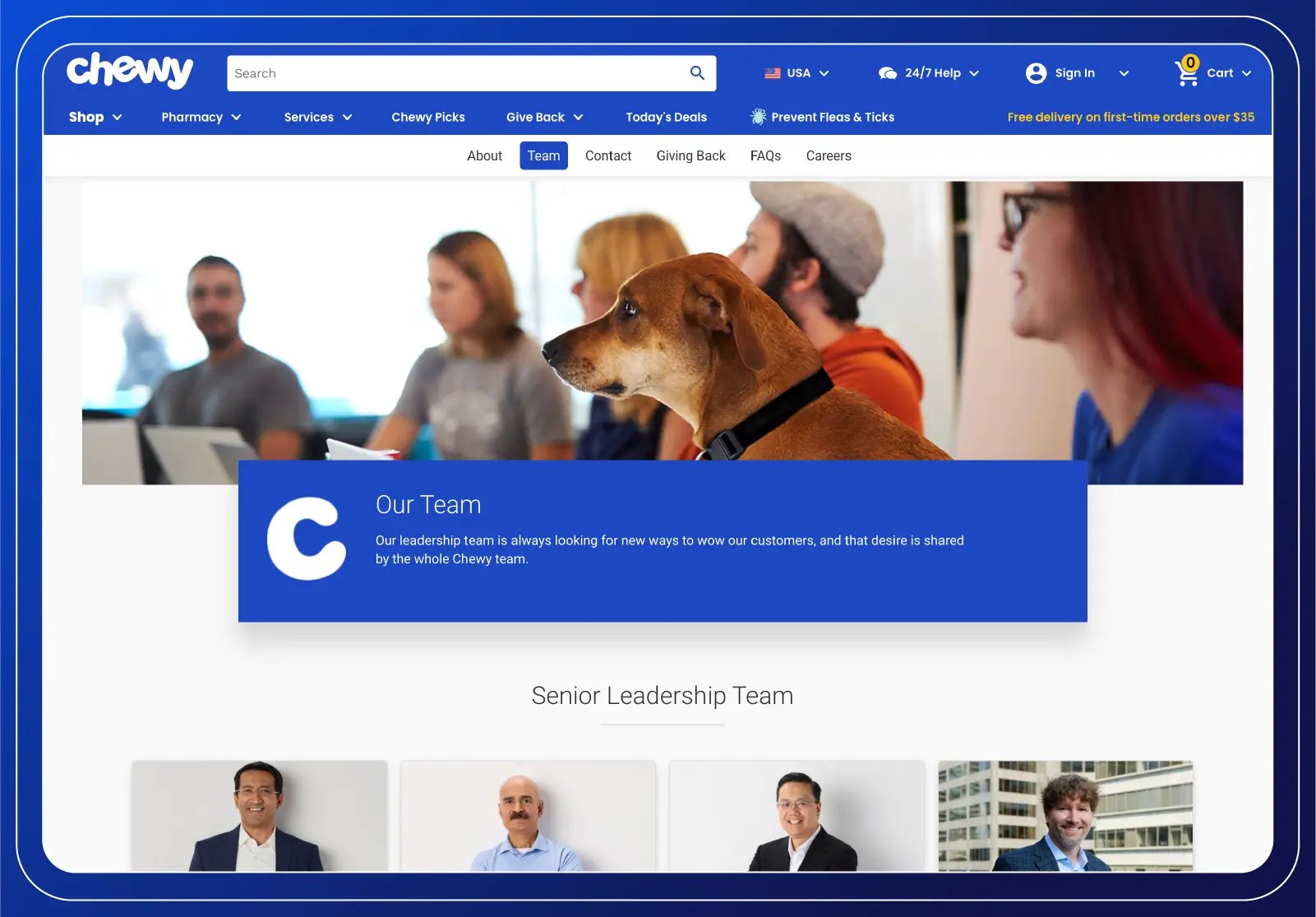
Going above and beyond for customers can help businesses build strong, lasting relationships. A prime example of this approach in action is Chewy, the online pet retailer known for its outstanding customer service. Chewy often surprises customers with handwritten notes, pet portraits, and unexpected gifts, demonstrating a level of care and attention that deeply resonates with pet owners. This proactive and thoughtful approach helps Chewy exceed expectations, making customers feel valued and understood.
Such gestures have cemented Chewy’s position as a customer-centric brand in a competitive market. By prioritizing the customer experience in this way, Chewy showcases the profound impact of exceeding expectations and anticipating needs while cultivating long-term customer relationships.
Takeaway: Find opportunities to surpass customer expectations to encourage loyalty and support a strong brand reputation. Using usability testing tools can help ensure your product meets and exceeds user needs effectively.
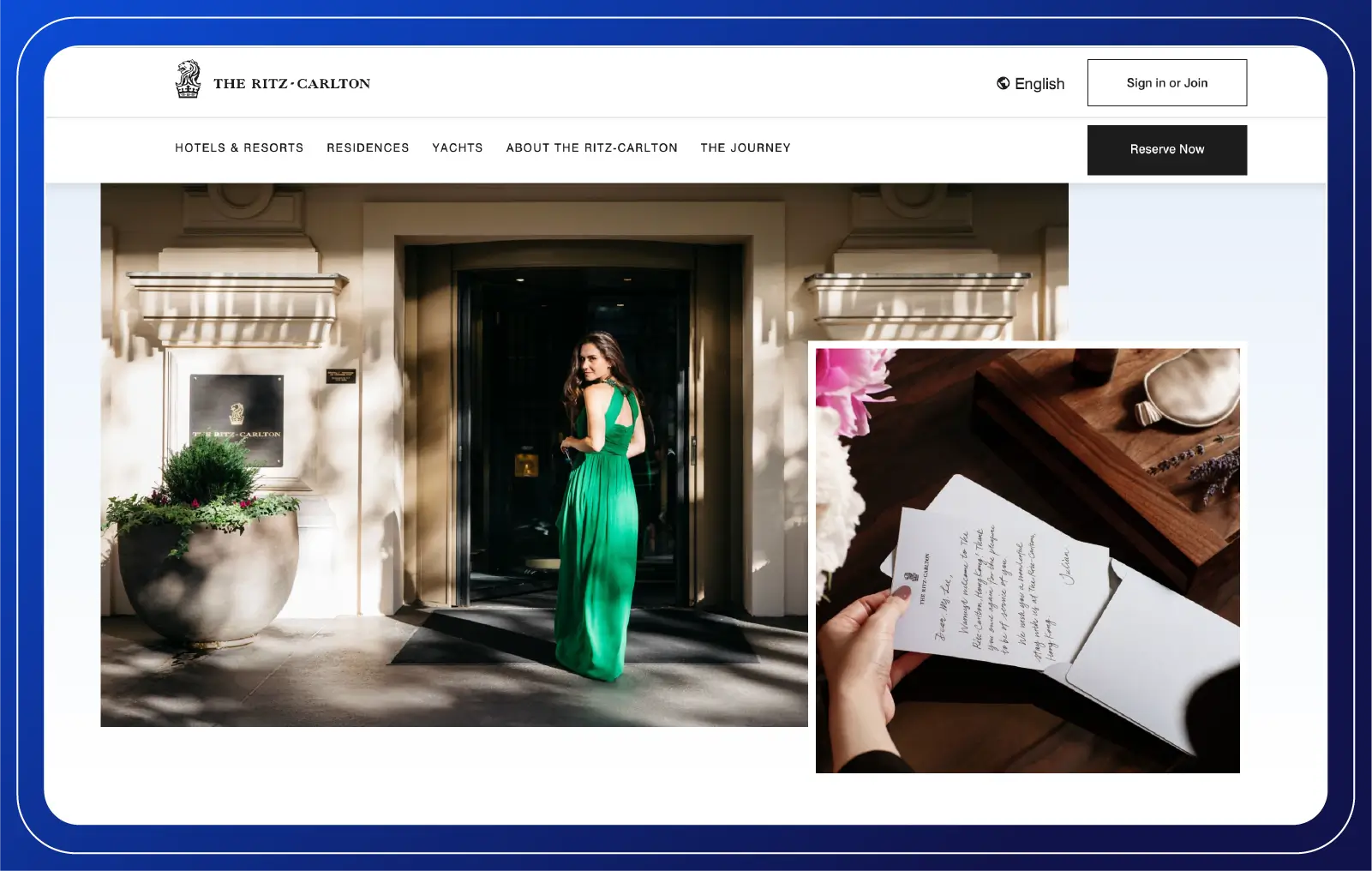
Delivering amazing customer service requires personalizing customer interactions. By tailoring interactions to the individual needs and preferences of each customer, companies can create a sense of belonging and build loyalty. The Ritz-Carlton has successfully implemented this strategy through its Mystique database.
The Mystique database is a comprehensive system that stores information about each guest’s preferences, from their favorite drinks and snacks to their preferred room temperature. This information is used to personalize every interaction a guest has with the hotel, from check-in to housekeeping and beyond. For example, a guest who prefers a particular type of pillow can have it waiting for them in their room upon arrival without having to request it.
By using data to personalize customer interactions, The Ritz-Carlton creates a sense of anticipatory service, where guests feel that the hotel will anticipate their needs before they even have to ask. According to a McKinsey study, 76% of consumers are more likely to do business with a company that offers personalized experiences, and The Ritz-Carlton’s approach is a prime example of this.
By using data to personalize customer interactions, The Ritz-Carlton creates a sense of anticipatory service, where guests feel that the hotel will anticipate their needs before they even have to ask. This reflects broader trends in the business world, where data-driven personalization is increasingly powered by AI. According to the Hostinger study, 51% of companies adopting generative AI are leveraging data to tailor customer interactions and exceed expectations. Similarly, a McKinsey study found that 76% of consumers are more likely to do business with a company that offers personalized experiences, making The Ritz-Carlton’s approach a standout example.
Takeaway: Actively and ethically collect relevant customer data to tailor services as if you’re a trusted friend, creating an unmatched level of personalized care.
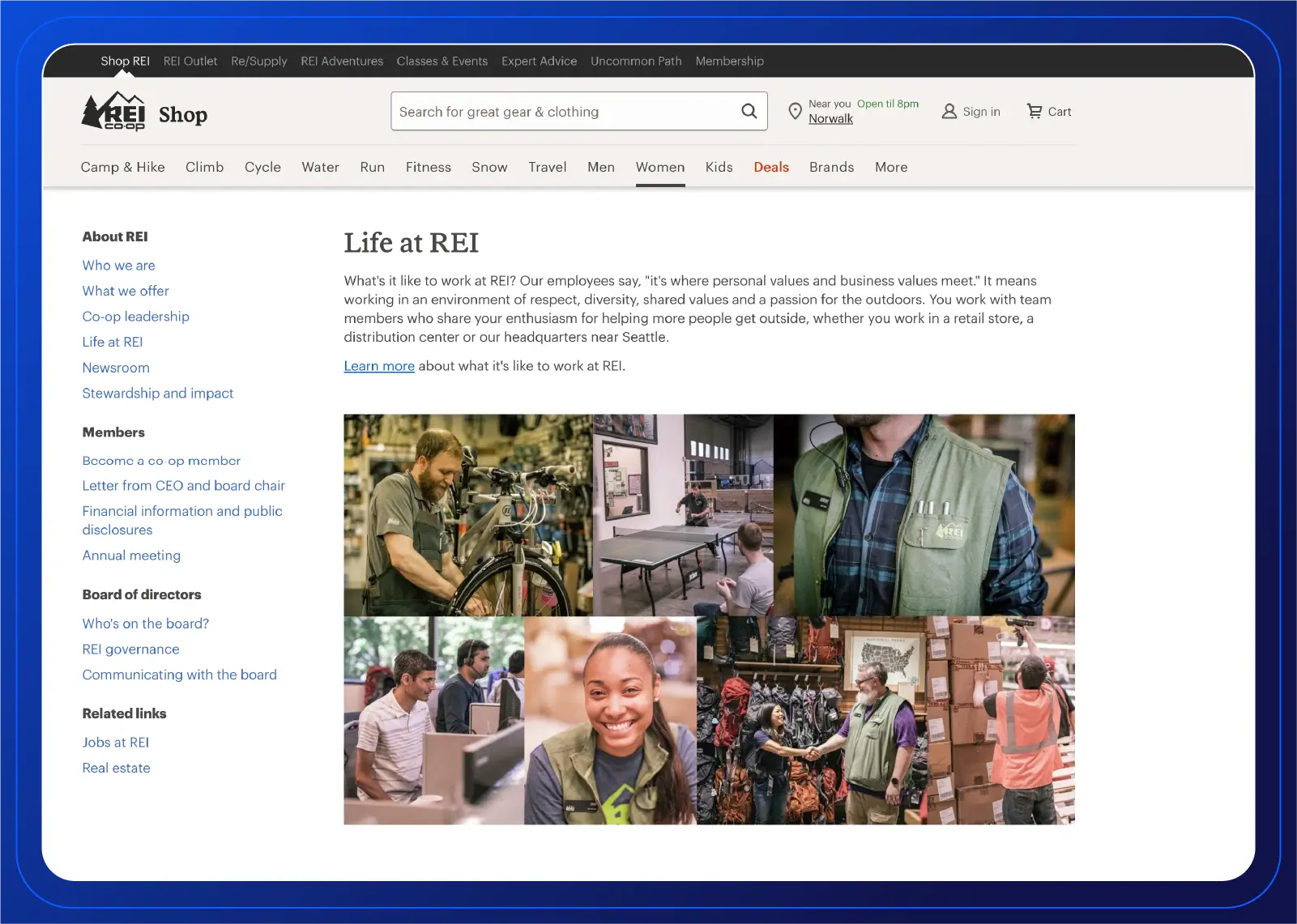
Customers will look to your team for advice on their purchases or the services they choose, and building customer education into customer service can improve experiences. REI has mastered this concept.
Every department in the store is staffed by veteran outdoor enthusiasts who take on the role of personal shopping assistants for customers looking for camping, hiking, fishing, and other outdoor gear. REI employees often have personal experience with the products, resulting in genuine recommendations and practical advice.
Takeaway: Offer regular training programs to ensure employees stay up-to-date on product features, industry trends, and customer feedback.
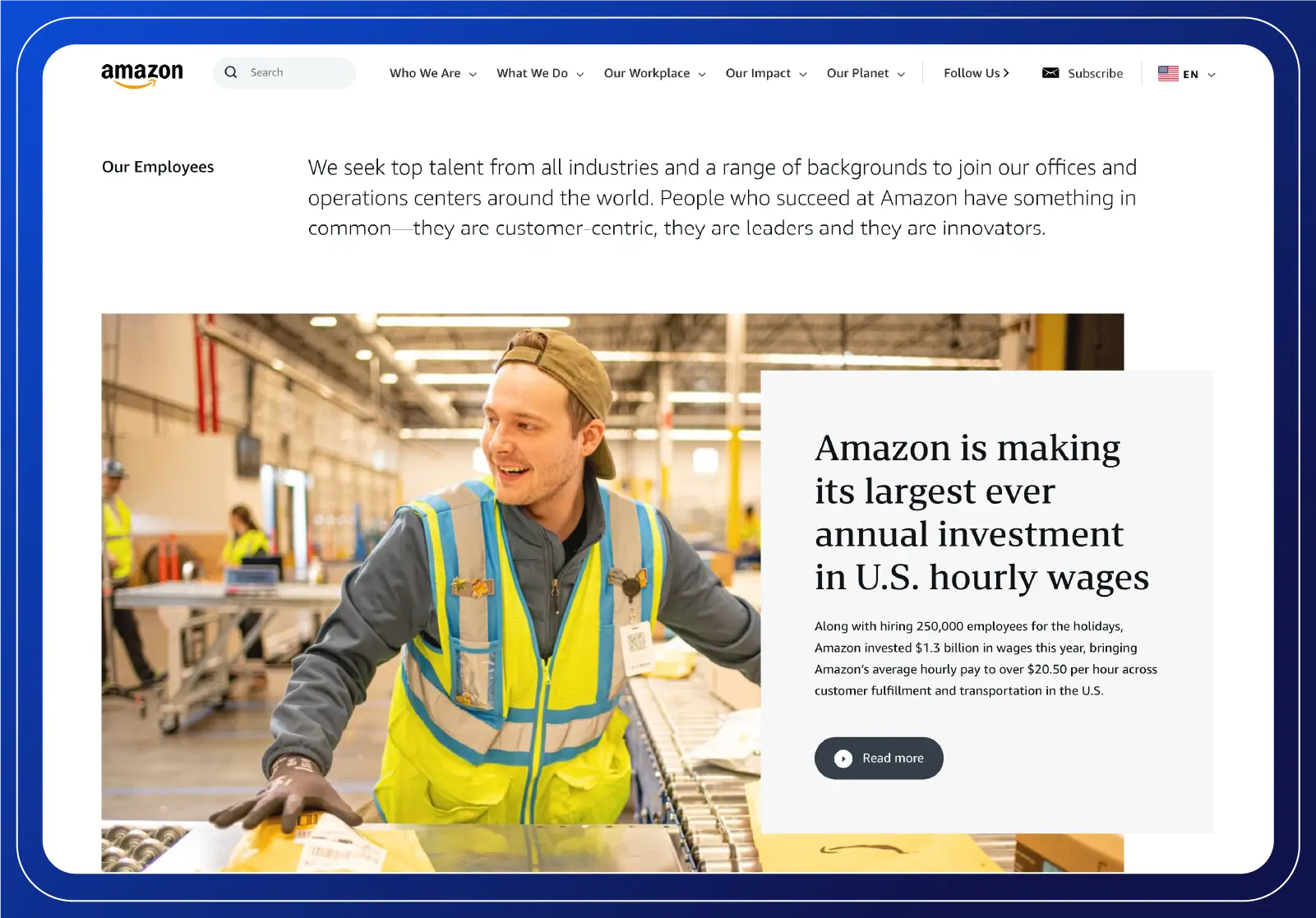
The best customer service operations support a business’s overall strategy. Take Amazon, for example. At a high level, its business strategy is building volume and keeping customers returning. As a result, Amazon’s customer service team fields a tremendous number of inquiries.
And, just like the company’s overall objective, the customer service team’s objective is to keep customers happy and coming back. They resolve issues with as little back and forth as possible and focus on building long-term relationships, even if that means a higher cost in the short term, with initiatives such as its customer-friendly return policies.
Of course, not every business can operate like Amazon, but the principle still holds. Customer service policies and operations should align with your business strategy.
Takeaway: Set clear customer service KPIs that directly tie into the company’s broader goals (customer retention, repeat purchases).
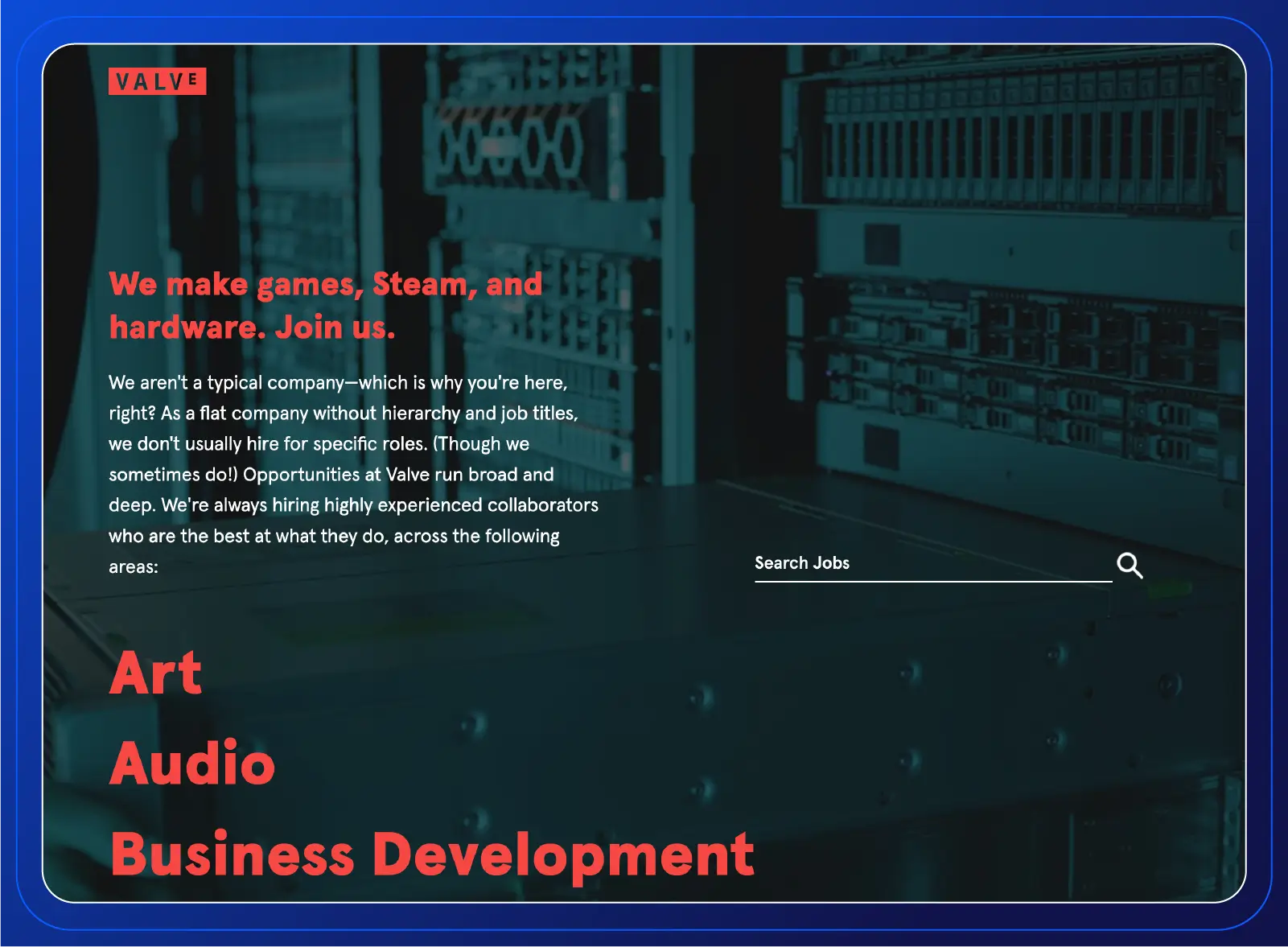
Businesses that consistently provide good customer service experiences never rest on their laurels. They constantly look for ways to improve service. For example, Valve, the creator of the video game distribution platform Steam, makes recommendations of games offered at significant discounts and has established streamlined processes that allow gamers to begin playing with just a few clicks.
However, Valve realizes that sometimes its recommendations miss the mark. So, it enables customers to test the game and get a refund. Customer feedback is golden for refining services and achieving higher customer satisfaction rates.
Takeaway: Develop a structured system for collecting qualitative and quantitative customer feedback and regularly review it to spot improvement areas.
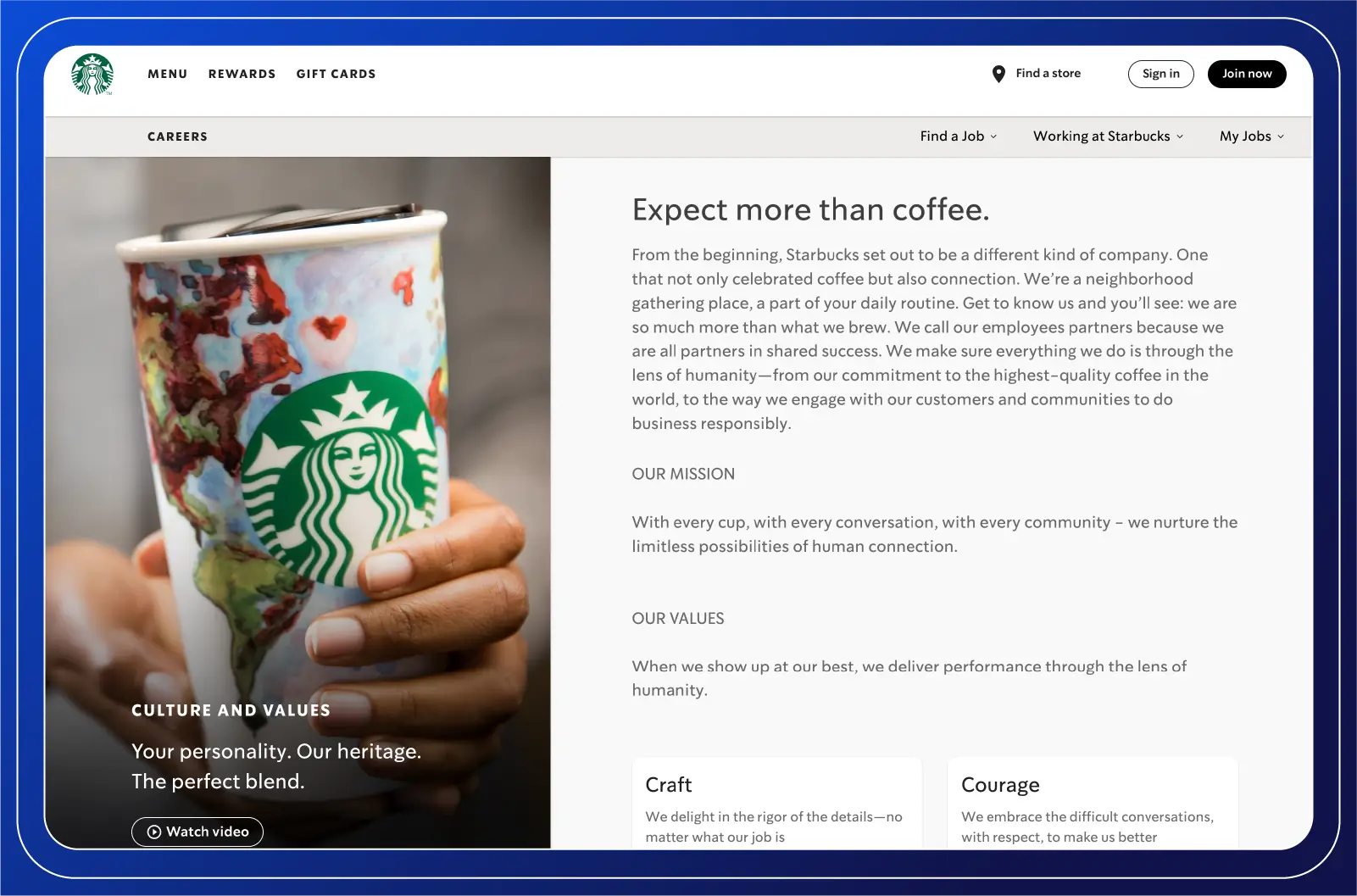
Formalizing customer service policies and processes will help your team deliver consistent, on-brand experiences. However, great customer service sometimes requires adapting to customers’ needs to find solutions that work for your business and them.
Starbucks transforms the art of drink-making into a personalized experience, allowing customers the creative freedom to tailor their beverages right down to the exact number of syrup pumps. There’s even an extensive (but unofficial) secret menu. This flexibility allows the company to cater to individual preferences and address unique situations rather than adhering to a one-size-fits-all approach. By prioritizing flexibility, Starbucks retains customers and builds a brand known for its considerate and responsive service.
Takeaway: While having process guidelines is important, train employees on handling unique requests and finding creative workarounds within company limits.
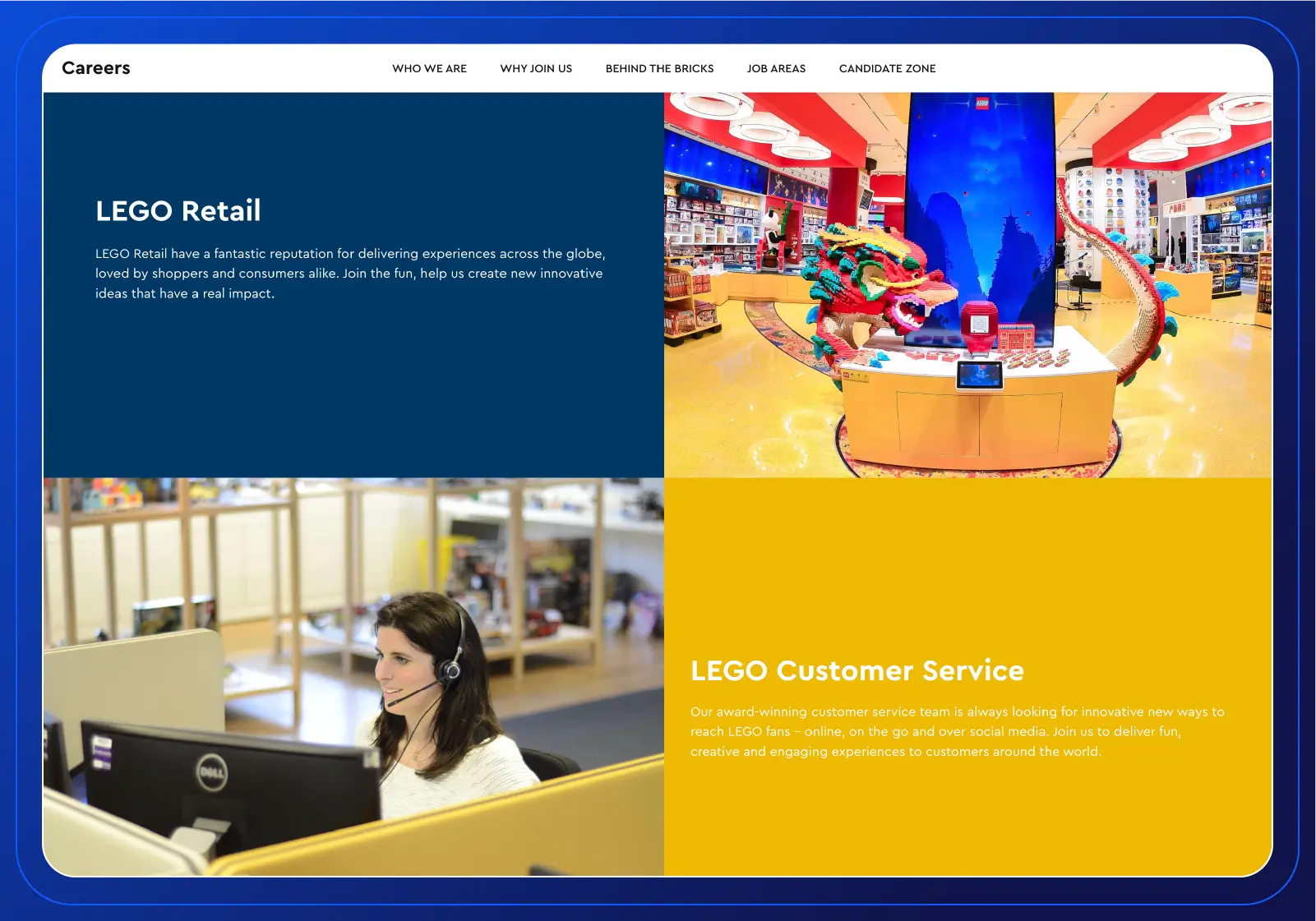
Empower your employees with the authority to make decisions and advocate for customers so they can confidently make purchasing decisions. Giving employees the autonomy to address customer issues without needing approval from managers speeds up the resolution process and provides a better overall experience. Most importantly, empowering staff boosts morale and job satisfaction. Employees who feel trusted to find solutions that keep customers happy while protecting the company’s interests will be more engaged and passionate about their work.
At LEGO, customer service representatives are empowered to use their own judgment to find creative solutions. This includes the ability to send free LEGO sets to customers as a gesture of goodwill, a powerful tool for building loyalty and strengthening customer relationships. This level of trust and responsibility reinforces a culture of innovation and care, which is central to LEGO’s brand identity.
Takeaway: Encourage your customer service team to use their initiative and creativity to solve customer problems, enhancing satisfaction and loyalty through personalized and thoughtful solutions.
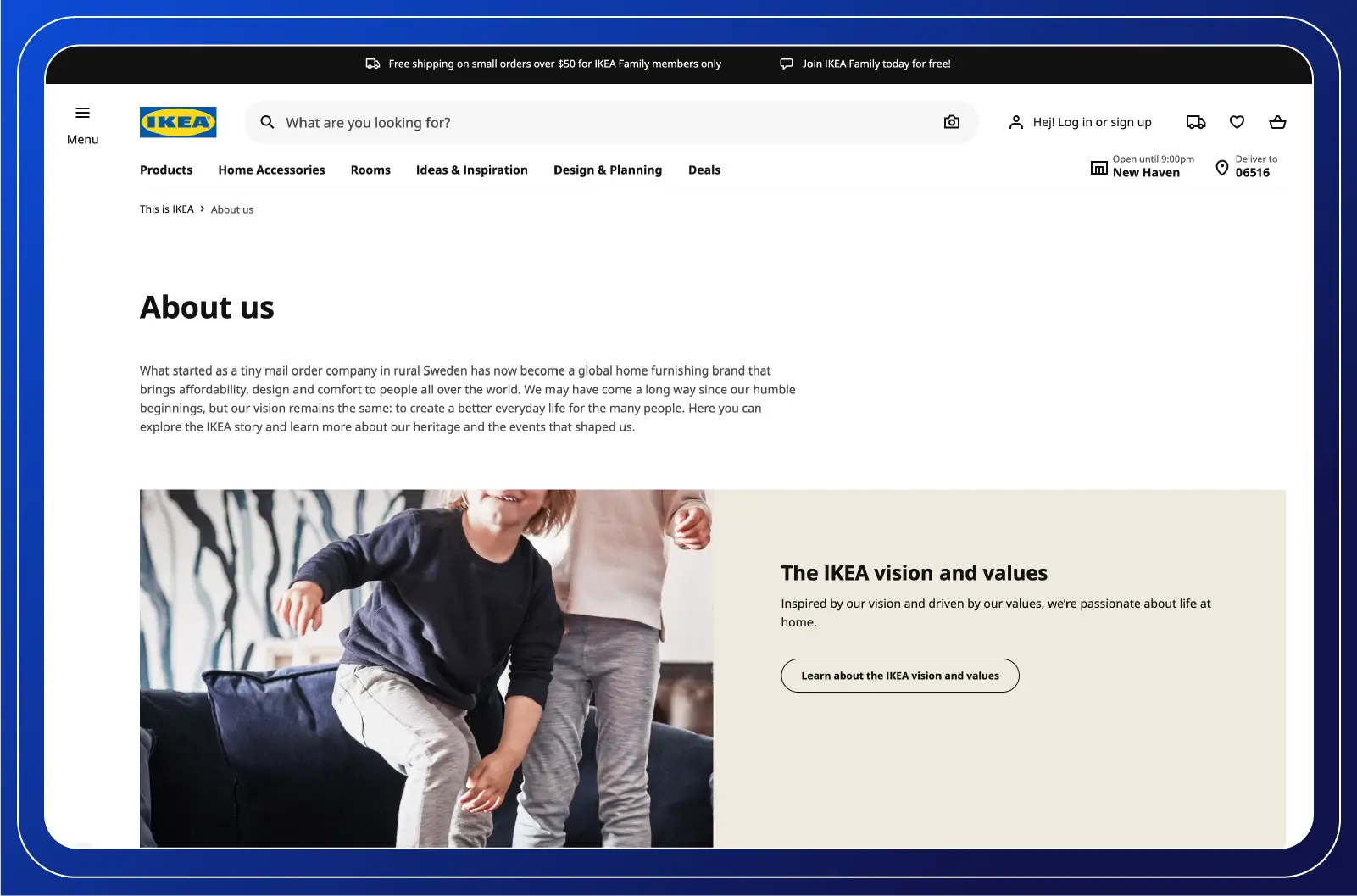
Providing customers with self-service options allows them to resolve issues on their own time. This could be an online knowledge base with how-to guides and FAQ, chatbots to handle simple queries, or a user forum where customers can connect with one another.
Data is key to perfecting self-service, and IKEA is proof. The company provides proactive documentation that prevents customers from making mistakes during furniture assembly. Instructions include customers’ most common mistakes and where they occur, creating an effective, proactive self-service customer service model.
Takeaway: Use analytics to identify the most common support inquiries and develop self-service content (videos, interactive guides) to address them.

Demonstrating a commitment to accessibility beyond basic legal requirements creates a genuinely welcoming environment for all customers. By ensuring that products, services, and overall experiences are inclusive and accommodating to all, businesses demonstrate a genuine commitment to meeting the diverse needs of their customer base, regardless of their abilities.
Target understands that accessibility is integral to a positive shopping experience for everyone, making accessibility a core tenet of its customer service philosophy. Its website is designed with navigability and screen reader optimization in mind, ensuring users with visual impairments can easily find what they need. In Target stores, wide aisles, accessible checkout counters, and large fitting rooms enable customers with mobility impairments to shop with ease and independence.
Target even puts a focus on accessibility through the design of its own products, like adaptive clothing for children with special needs. This line features clothing with modified designs and materials that cater to children with sensory, physical, and other disabilities.
Takeaway: Partner with accessibility advocacy groups to conduct regular audits of in-store and online experiences to identify areas of improvement.
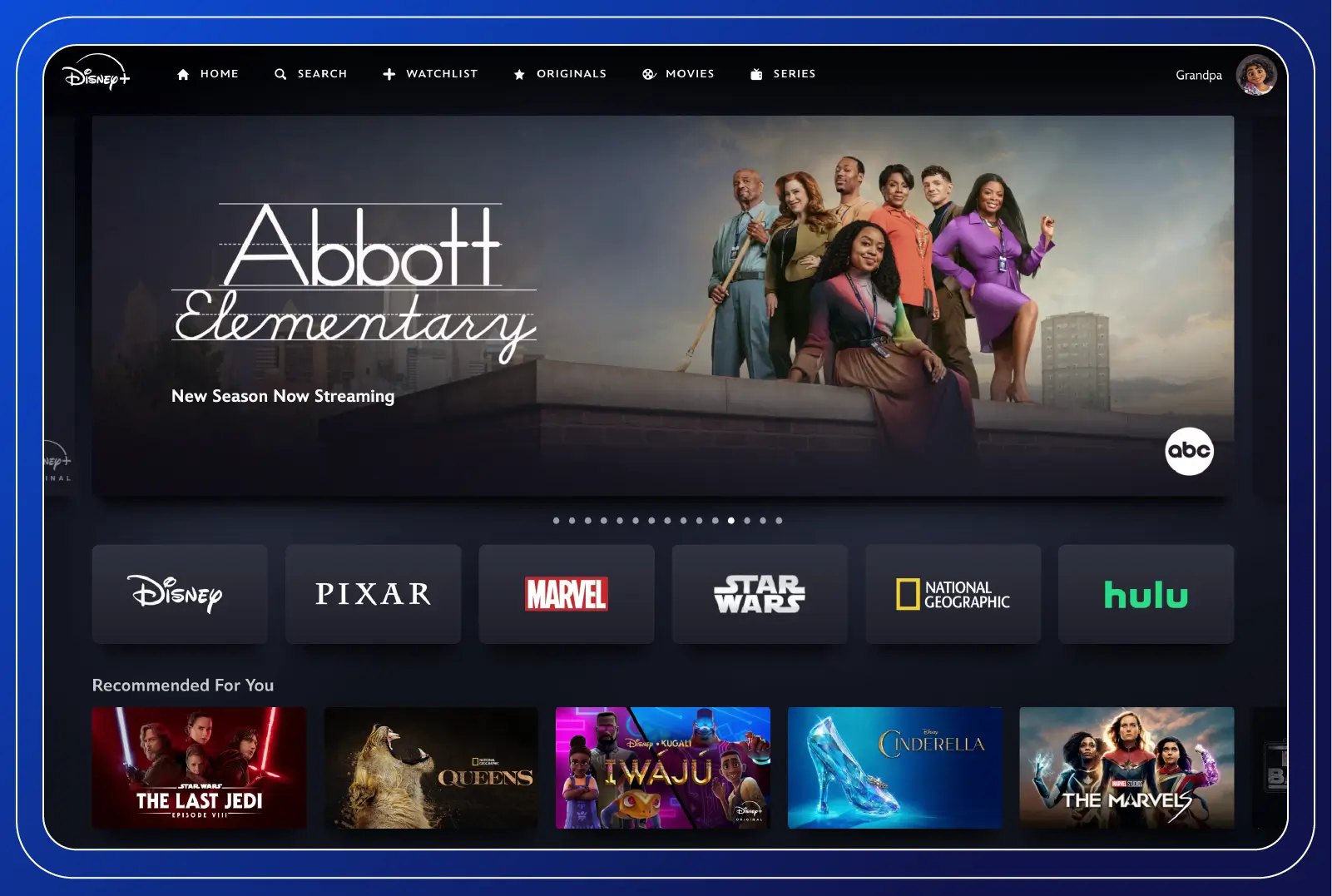
Consider scaling your customer service capabilities with technology, such as chatbots or AI, to enhance the customer experience. These solutions can automate customer service, giving customers an advanced self-service option. In addition, solutions that leverage natural language processing (NLP) allow customers to interact conversationally with the solution for good customer experiences.
A prime example of a company embracing technology is Disney’s creation of its streaming service, Disney+. As the popularity of DVDs and Blu-rays declined, Disney recognized the need to pivot to changing consumer preferences. By launching Disney+, the company ensured its enormous library of beloved content remained accessible to existing fans while also attracting new viewers seeking a convenient and personalized entertainment experience—something Disney+ is able to do through advanced algorithms and NLP, which understand and categorize content based on viewer data.
Takeaway: Explore emerging technologies like AI or machine learning to offer personalized recommendations or tailored experiences for customers.
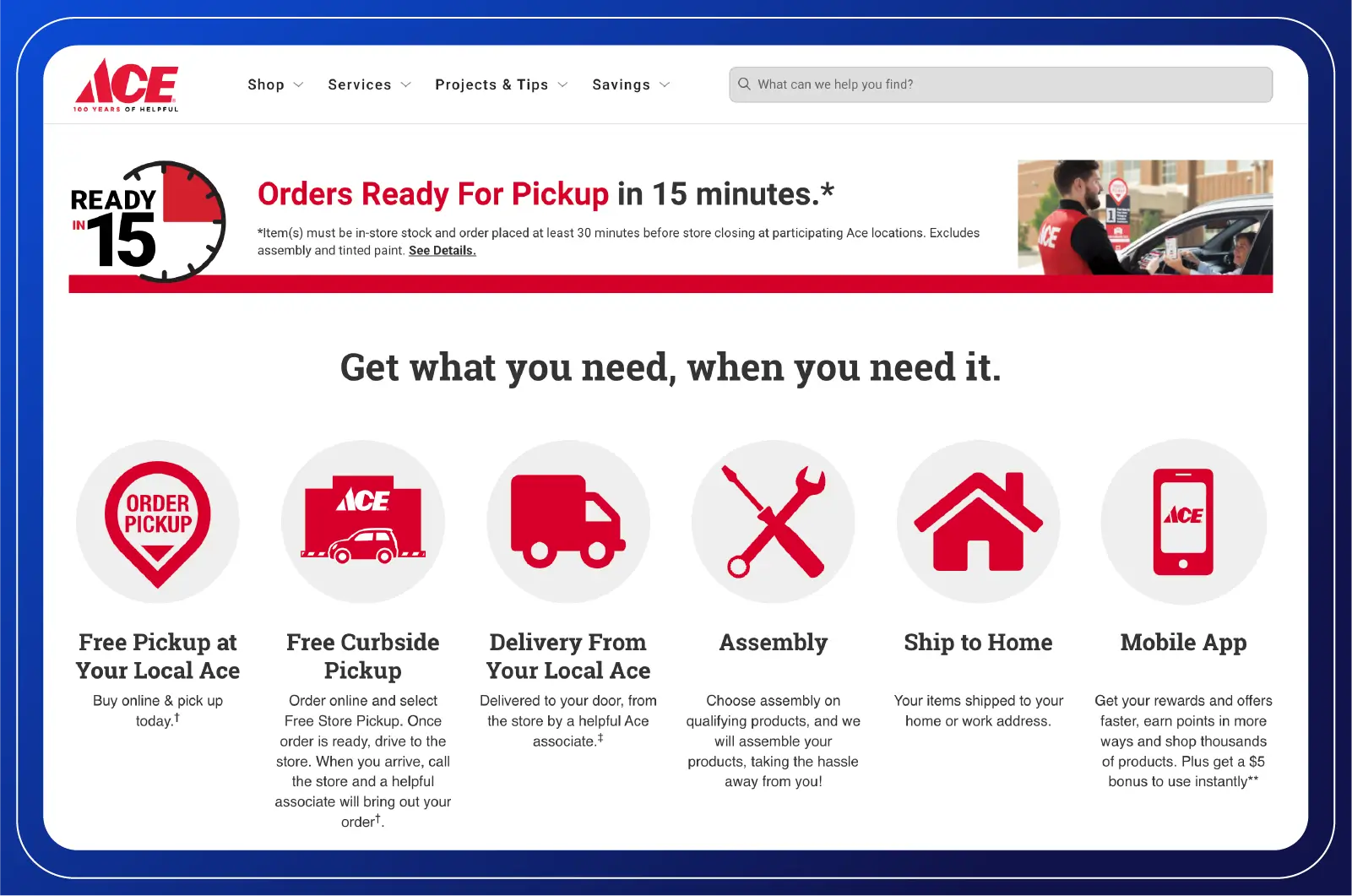
Meeting or exceeding customers’ expectations requires meeting customers where they are. Consider taking an omnichannel approach with contact-center-as-a-service (CCaaS) technology that enables customers to contact your team via phone, email, social media, or live chat. With a variety of options, you’ll be able to provide the experiences any customer prefers.
Ace Hardware’s integration of physical and digital spaces allows customers to conduct initial research online, participate in both in-person and virtual events, and enjoy the convenience of multiple shopping and delivery options. This seamless omnichannel experience ensures that whether customers prefer to shop in-store, online, or through a mobile app, they receive efficient service personalized to them. Ace’s strategy reinforces customer loyalty and positions the company as a forward-thinking leader in retail.
Takeaway: Ensure a smooth transition between channels by integrating customer data across platforms, allowing for a consistent, personalized experience.
High-quality customer service significantly impacts a company’s reputation and, ultimately, its bottom line. Here are some of the benefits of great customer service:
Because all businesses are different, customer service delivery will also differ. However, there are five characteristics that great customer service has across the board. They are as follows.
Your team should always treat customers with dignity and respect. Demonstrating respect for customers will enhance customer experiences.
It can also help de-escalate tense interactions and earn the benefit of the doubt if an agent needs extra time to find an answer or resolve a problem. Showing respect starts with “please” and “thank you” and ends with honesty, transparency, and accountability for mistakes.
Customers want answers fast. Research shows that 3 out of 4 consumers buy from the company that responds first. Helping customers resolve issues or access information quickly is key to great customer service.
Most customers agree that one of the key elements of good customer service is reliability. Your team must be accessible, return calls on time, and deliver what they promise. Customers want to know they can count on your team when they need service or support.
Good customer service skills also include the ability to empathize with the customer. Empathy validates the customer’s feelings and lets them know you understand their frustration, even if your business isn’t at fault. A customer who speaks to an empathetic person is less likely to become angry and more likely to cooperate to resolve the issue.
Your agents should always conduct themselves professionally. That includes building the first four values into how they interact with customers, staying on task, relying on company policies and information to provide accurate, relevant answers, and respecting the customer’s time.
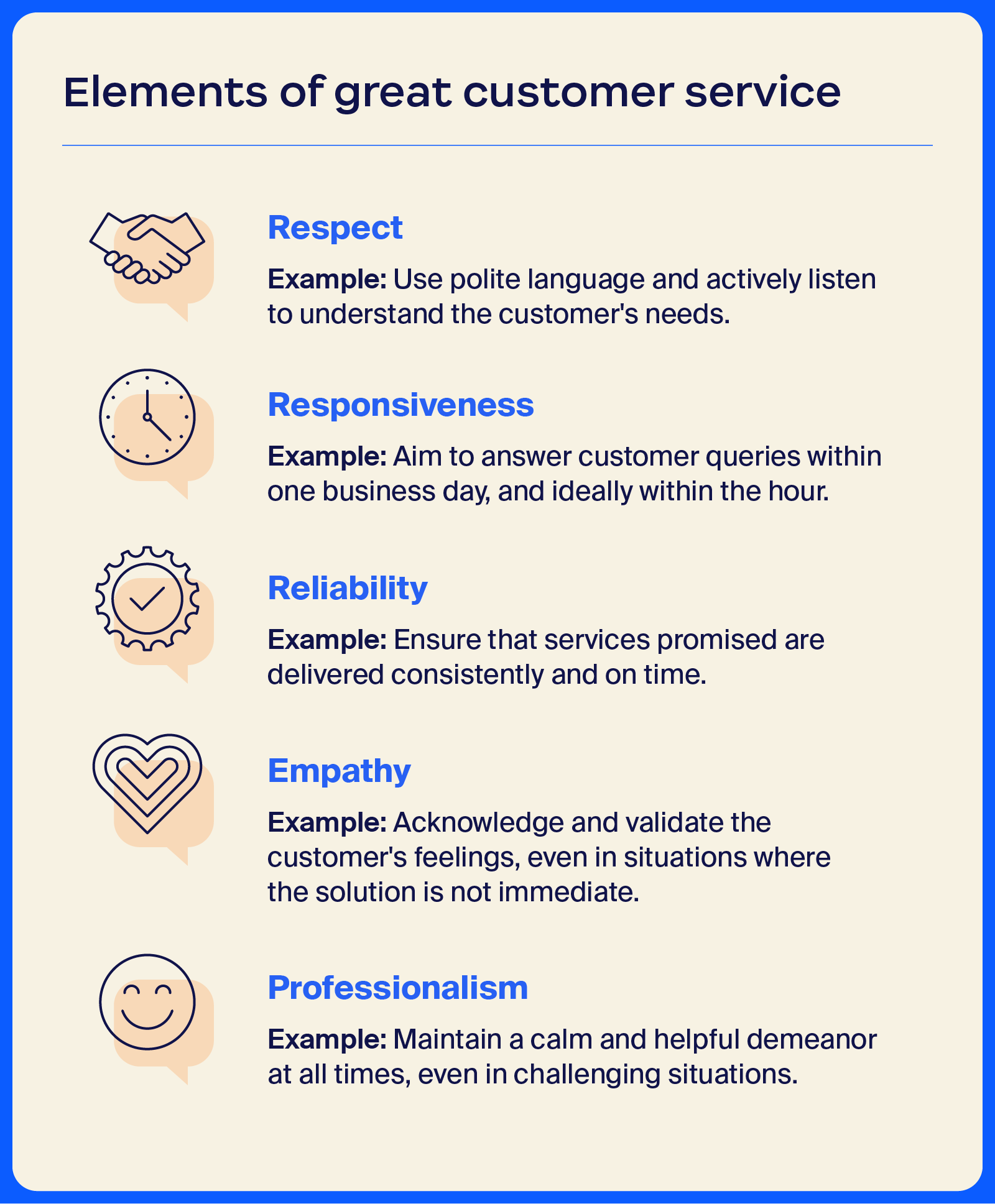
Achieving excellent customer service delivery positively impacts satisfaction, but it also translates to benefits for your business that you can measure in dollars and cents.
Research shows that consumers are willing to pay a premium for good customer experiences, which can help grow revenues and profits. On the other hand, 59% of U.S. consumers will walk away after several bad customer service experiences, thus hurting your bottom line.
Industry leaders ensure they’re building relationships with loyal customers by creating excellent customer service in the customer journey. Whether through AI solutions, customer service surveys, or empathetic agents, businesses are consistently making CX a priority.
At Zoom, we don’t just develop solutions for our customers to use, but we use them ourselves. Check out how we use our own AI chatbot at Zoom to generate a 93% self-service rate and save more than $13 million each month.
Want to learn more about our virtual agents, AI technology, and customer experience solutions? Contact us to discover new ways to support your team and deliver fast, reliable, and accurate customer service.